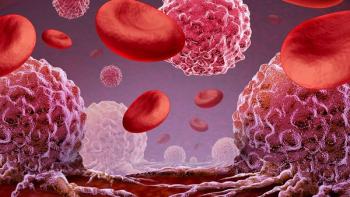
PARP Inhibitors Help Ovarian Cancer Survivors Live Longer – and Better – Without Disease Progression
Maintenance therapy with PARP inhibitors may be a beneficial option for patients with ovarian cancer after the first line of treatment.
Patients with newly diagnosed ovarian cancer may be able to keep their cancer from progressing — and maintain a good quality of life — by taking maintenance therapy Zejula (niraparib) after their main line of therapy, according to a recent study.
Maintenance therapies may be given for a long period of time and are used to help keep cancer from coming back after the first line of therapy. Many of these therapies often extend progression-free survival (PFS; time during and after treatment when the patient lives without disease progression) and maintain patients’ quality of life.
Zejula Boosts Progression-Free Survival
The trial enrolled 733 patients who were newly diagnosed with ovarian cancer, received chemotherapy and were all at a high risk of their cancer coming back.
Findings showed that PFS was 13.8 months with Zejula, compared to 8.2 months with the placebo.
“We don’t have long enough data yet to know if this is also going to translate into longer overall survival,” Dr. Floortje Backes, gynecologic oncologist at The Ohio State University and James Cancer Hospital in Columbous, Ohio, said in an interview with CURE®. “But so far we do know, that when you take this medication, it adds several months to almost, or more, than a year for the cancer to come back.”
Specifically, in patients with tumors with homologous-recombination deficiency (HRD)-positive tumors, there was a PFS rate of 21.9 months for those patients taking Zejula, compared with 10.4 months for those on the placebo.
“We see that especially patients who have certain changes in their tumor, for example BRCA mutation, or another change considered, called a homologous-recombination deficiency, for those patients it is most beneficial,” she added.
Backes explained that there are a few different PARP inhibitors that are in the same class as Zejula, and they have different indications, but do have a lot of similarities. PARP inhibitors are a type of targeted cancer drug that can help keep cancer cells from repairing their damaged DNA — causing them to die. Other types of PARP inhibitors for ovarian cancer include
Side Effects and Quality of Life
Backes also mentioned that there was just a study presented demonstrating that quality of life was maintained while taking Zejula. “So certainly … it does not seem to harm quality of life to be on this drug.”
The most common, severe side effects observed with Zejula were anemia (31% of patients), low blood platelet counts (28.7%), and low white blood cell count (12.8%). Rubraca had similar side effects in addition to low red cell count and increased live enzymes that indicate liver injury.
Additionally, quality of life was not significantly influenced with Lynparza which was
For more news on cancer updates, research and education, don’t forget to





